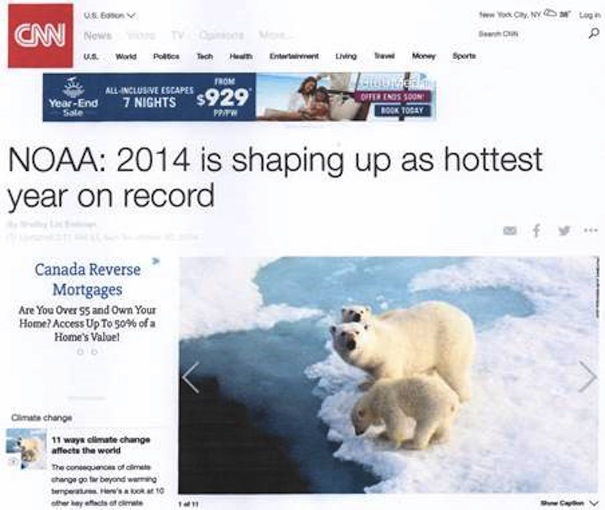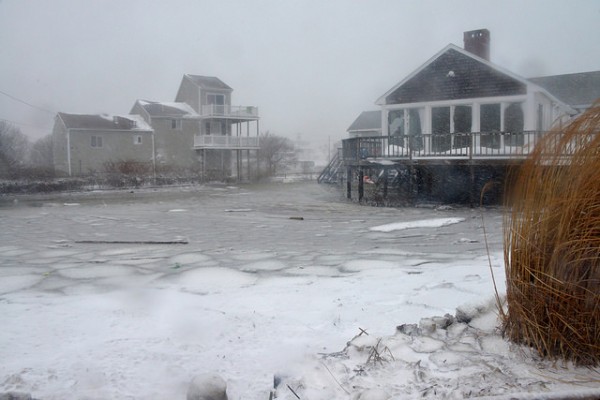We were told in October, before 2014 was over, that it was heading toward being the warmest year on record (Figure 1). The visual link of polar bears underscored the message. In fact, 2014 was among the coldest 3 percent of years of the last 10,000, but that doesn't suit the political agenda.

© CNNFigure 1
We know the headline referred to NOAA's projection, but the public only remember "warmest year". It is a routine of manipulation of headlines practiced by bureaucrats and supporters of the Intergovernmental Panel on Climate Change (IPPC), from the start. The claim was not surprising, because NOAA was pushing 2014 as warm beginning in January with this headline
"NOAA: January 2014 fourth-warmest on record." Various months were identified during the year, for example, "NOAA: August 2014 Was The Warmest On Record," noting August was the warmest by a fraction. But they had already
reported,
The summer of 2014 is officially the hottest since the modern instrumental record began more than 130 years ago, according to the latest state of the climate report from NOAA's National Climatic Data Center.
By October they were
summarizing the year.
"This makes the first ten months of 2014 the warmest January to October period on record and puts 2014 on track to be the warmest year recorded in the NOAA archive, which dates back to 1880."
Bob Tisdale provided an excellent summary of the
"Anticipation" for two surface records from GISS and NCDC. He was not surprised when these records appeared, showing 2014 was the warmest, according to them, by
0.02°C. Remember, this is from a record that is restricted by the historic record to measurements of 0.5°C. We also know the two satellite records, RSS and
UAH, both show it was
not the warmest year.
To counteract the headline you need something very dramatic, because there is nothing significant about the 2014 temperature as Tisdale plans to identify in an upcoming article titled, "The Uptick in Global Surface Temperatures in 2014 Doesn't Help the Growing Difference between Climate Models and Reality". He is interested in seeing how Gavin Schmidt, who replaced James Hansen at the Goddard Institute for Space Studies (GISS), is carrying the torch. History shows that GISS readings are consistently
higher than all other sources. It is just one indicator of the temperature adjustments made so the AGW hypothesis fits the political agenda.

Comment: U.S. East Coast threatened by 'historic' snowstorm with possible significant snow accumulations